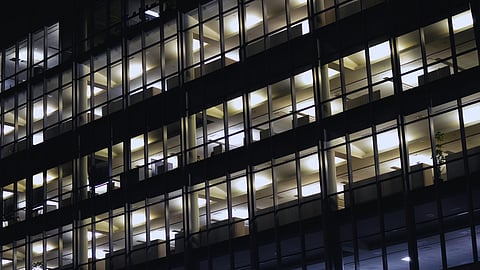Privately-generated power: The real reason why load-shedding is disappearing
Key topics:
Eskom avoids load-shedding mainly due to lower demand, not efficiency.
Private solar and batteries sharply cut peak electricity demand.
Energy security remains weak; more renewables are urgently needed.
Sign up for your early morning brew of the BizNews Insider to keep you up to speed with the content that matters. The newsletter will land in your inbox at 5:30am weekdays. Register here.
Support South Africa’s bastion of independent journalism, offering balanced insights on investments, business, and the political economy, by joining BizNews Premium. Register here.
If you prefer WhatsApp for updates, sign up to the BizNews channel here.
Reduced demand due to a surge in privately-generated power is the main reason Eskom has sidestepped load-shedding in 2025, not improvements in electricity generation.
That is according to a recent Energy Tracker report compiled by Nedbank Group’s Economic Unit, which included an analysis of Eskom’s energy availability factor (EAF) from 2019 to 2025.
It found that the power utility’s dispatchable energy generation in 2025 had increased above 2023 levels but was still inefficient by Eskom’s historical standards.
“Eskom’s dispatchable generation averaged 17.9 terawatts between January and July 2025,” the report said.
“This is 0.9% below its 2024 average, 3.3% above its 2023 average, but remains 7.2% below its 2019 to 2021 capacity.”
At the same time, demand for Eskom’s energy had fallen below the 2019 to 2021 average and has remained there.
The decline is also clearly illustrated by the drop in peak annual electricity demand, which occurs each year in winter.
“In July 2025, it was 3.3% below its July 2024 peak and 5.9% below the average peak demand over 2019 to 2021,” the report said.
Nedbank said the sustained decline in demand for Eskom’s energy can be explained by the rapid uptake of privately-installed power generation.
While fixed investments into renewable machinery and equipment, such as solar panels, batteries, and inverters, have recently declined, they remained above 2022 levels.
“Small-scale embedded generator (SSEG) registrations increased by 474% and solar PV installations by 138% between December 2022 and December 2024,” Nedbank said.
According to Nedbank’s estimates, private rooftop solar capacity increased from around 1,500MW at the end of 2022 to more than 9,000MW. That excludes the larger registered SSEG systems.
The 7,500MW difference is equal to the amount of demand Eskom shaves from the grid at stage 7 or stage 8 load-shedding.
Read more:
Eskom’s own estimates show that “behind-the-meter” rooftop solar PV capacity has grown 211% from 2,265MW to 7,040MW over the last three years.
The capacity is more than double all the utility-scale solar power connected to Eskom’s grid and less than 200MW short of all the utility-scale renewables, including wind power.
Private power helping — but more needed for final fix
While solar power systems can only generate power during the day, many installed specifically for load-shedding protection are paired with battery storage.
That means they can also reduce demand on the grid during peak evening and morning periods.
The National Transmission Company of South Africa’s system operator has explained that even systems without batteries have helped Eskom avoid load-shedding.
By taking demand off the grid during the day, Eskom can spare emergency generation reserves for open-cycle gas turbines (OCGTs) and pumped-storage dam schemes for use during peak periods.
For several years before 2024, Eskom had frequently depleted the diesel and water levels at these plants by the end of the week, requiring frequent weekend load-shedding.
Nedbank said that the decline in demand for Eskom’s energy signalled a “structural break” in reliance on Eskom’s supply, which has only made “modest” improvements from the last two years.
However, although renewable power has undoubtedly contributed significantly to the reduction in load-shedding, overall electricity demand in South Africa was still greater than supply.
Eskom is currently compensating for the gap at certain times during the day with load reduction, OCGTs, and electricity imports from across the border.
The use of these measures has declined due to a steeper decline in demand compared to the rise in supply.
The Nedbank researchers said South Africa’s energy security remained compromised as long as Eskom relied on these compensatory loads.
“Despite the year-on-year improvements in the EAF and load-shedding, energy supply is still insecure given the poor state of infrastructure,” Nedbank said.
Nedbank’s report recommended that the government expedite plans and programmes to increase renewable power, which has been progressing slowly.
This article was first published by MyBroadband and is republished with permission

